A Trip to the New 7 Wonders of the World
Family time is something our kids look forward to during weekends. It is the time that we get to unwind from our weekdays routine of school and home and my husband too from his work. It doesn't cost us a lot when we go out for a stroll because as much as possible if it is not really hot, we just ride a tricycle and then a jeepney to the mall. But when Zoe had her tet spells (atake) was more often, we have no choice but to take a taxi cab. At least in there, she gets to seat comfortably and not be bothered by the smoke and dust from the streets. She has difficulty breathing and we were advised by her doctor to keep her away from irritants.
Having a heart defect made Zoe vulnerable to illnesses. I wanted to protect her from illnesses so we seldom go out of our house. She can not play active games so she finds joy in watching her favorite shows, playing with her toys and drawing. Going out of the house is also something she looks forward to every weekend. She gets excited with every time we tell her we are going out. After waking up, she would always quickly finish her bath and dress up with her nicest clothes.
So there, after getting ready, we headed out to the mall, and we were lucky that there was an exhibit of photos of the New Seven Wonders of the world. My kids most especially Zoe was so happy that she even gladly striked a pose of the 8 global heritage. We are only visiting the photo replica of New Seven Wonders of The World for now, but who knows, we might visit them in person someday!
Machu Picchu (Peru)
An Incan city of sparkling granite precariously perched between 2 towering Andean peaks, is thought by scholars to have been a sacred archaeological center for the nearby Incan capital of Cusco. Built at the peak of the Incan Empire in the mid-1400s, this mountain citadel was later abandoned by the Incas. The site remained unknown except to locals until 1911, when it was rediscovered by archaeologist Hiram Bingham. The site can only be reached by foot, train or helicopter; most visitors visit by train from nearby Cusco.
Christ the Redeemer Statue (Rio de Janeiro)
The Art Deco-style Christ the Redeemer statue has been looming over the Brazilians from upon Corcovado mountain in an awe-inspiring state of eternal blessing since 1931. The 130-foot reinforced concrete-and-soapstone statue was designed by Heitor da Silva Costa and cost approximately $250,000 to build - much of the money was raised through donations. The statue has become an easily recognized icon for Rio and Brazil.
Petra (Jordan)
Declared a World Heritage Site in 1985, Petra was the capital of the Nabataean empire of King Aretas IV, and likely existed in its prime from 9 B.C. to A.D. 40. The members of this civilization proved to be early experts in manipulating water technology, constructing intricate tunnels and water chambers, which helped create an pseudo-oasis. A number of incredible structures carved into stone, a 4,000-seat amphitheater and the El-Deir monastery have also helped the site earn its fame.
Taj Majal (Agra, India)
A mausoleum commissioned for the wife of Mughal Emperor Shah Jahan, the Taj Majal was built between 1632 and 1648. Considered the most perfect specimen of Muslim art in India, the white-marble Taj Majal actually represents a number of architectural styles, including Persian, Islamic, Turkish and Indian. The Taj Majal also encompasses formal gardens of raised pathways, sunken flower beds and a linear reflecting pool.
The Roman Colosseum (Rome)
Rome's, if not Italy's, most enduring icon is undoubtedly its Colosseum. Built between A.D. 70 and 80 A.D., it was in use for some 500 years. The elliptical structure sat nearly 50,000 spectators, who gathered to watch the gladiatorial events as well as other public spectacles, including battle reenactments, animal hunts and executions. Earthquakes and stone-robbers have left the Colosseum in a state of ruin, but portions of the structure remain open to tourists, and its design still influences the construction of modern-day amphitheaters, some 2,000 years later.
The Great Wall of China (China)
Built between the 5th century B.C. and the 16th century, the Great Wall of China is a stone-and-earth fortification created to protect the borders of the Chinese Empire from invading Mongols. The Great Wall is actually a succession of multiple walls spanning approximately 4,000 miles, making it the world's longest manmade structure.
Chichen Itza (Yucatan Peninsula, Mexico)
The genius and adaptability of Mayan culture can be seen in the splendid ruins of Chichen Itza. This powerful city, a trading center for cloth, slaves, honey and salt, flourished from approximately 800 to 1200, and acted as the political and economic hub of the Mayan civilization. The most familiar ruin at the site is El Caracol, a sophisticated astronomical observatory.
The Great Pyramid of Giza (Honorary Status)
The Great Pyramid of Giza (also known as the Pyramid of Khufu or the Pyramid of Cheops) is the oldest and largest of the three pyramids in the Giza pyramid complex bordering what is now El Giza, Egypt. It is the oldest of the Seven Wonders of the Ancient World, and the only one to remain largely intact.
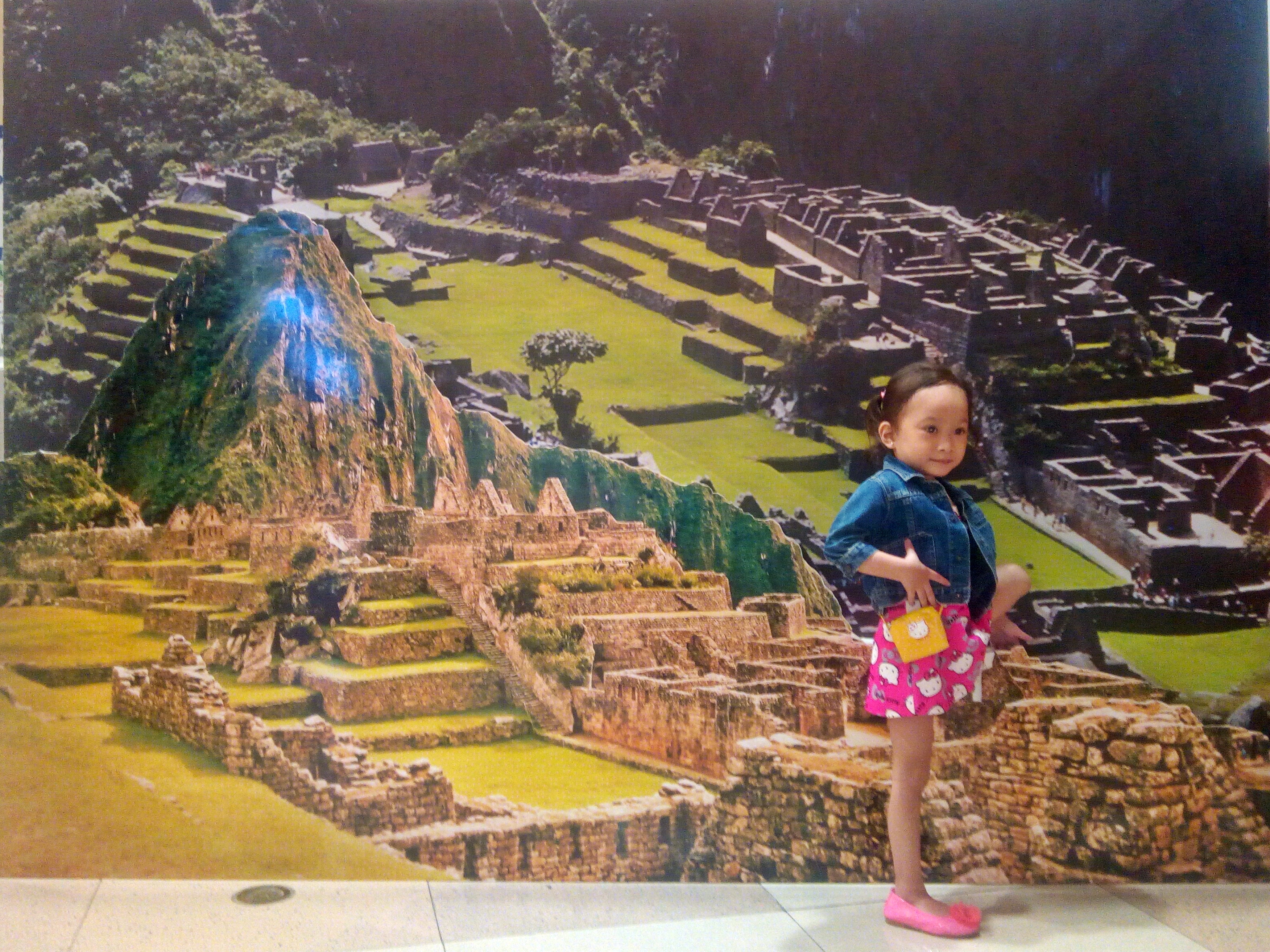

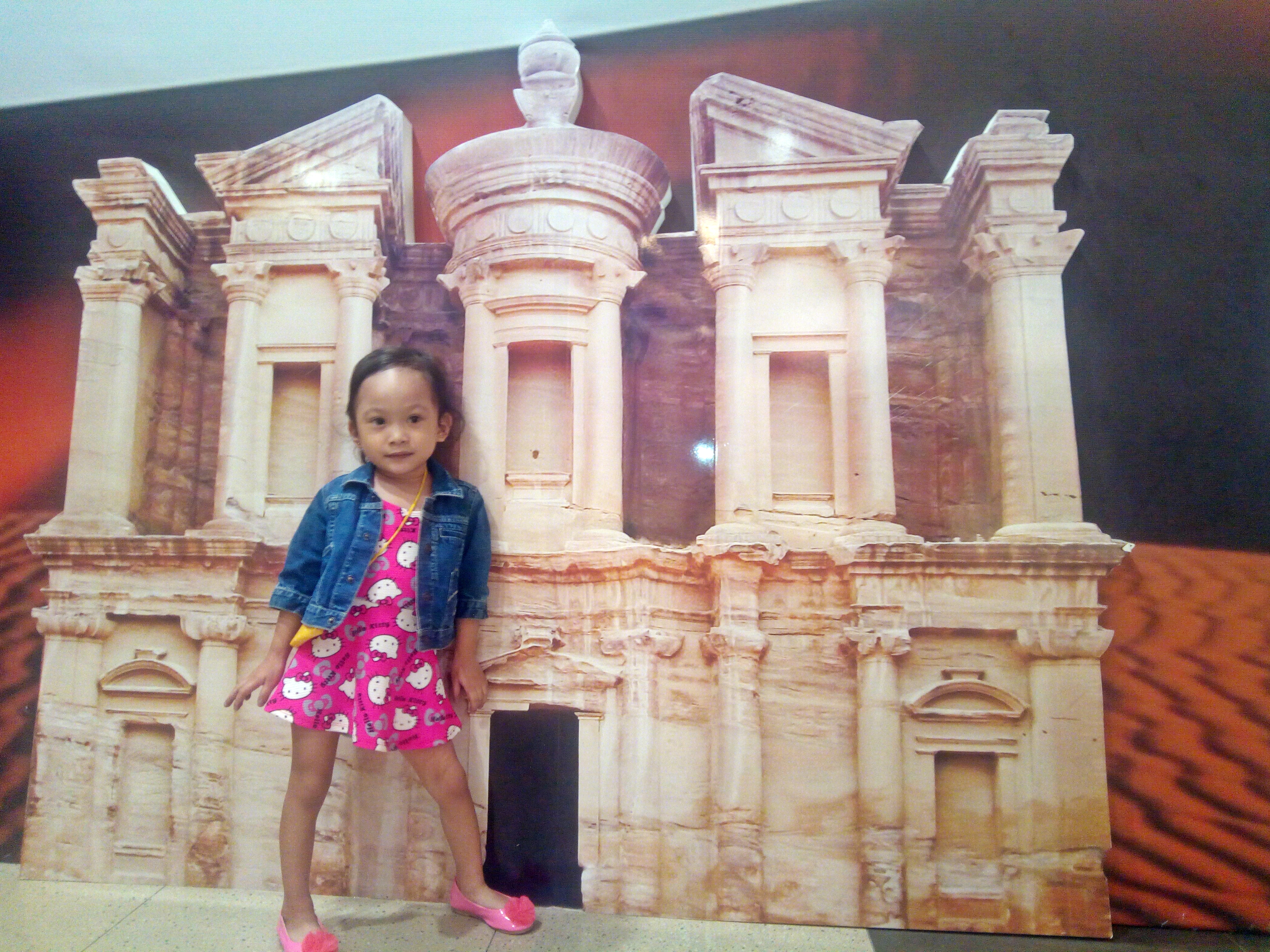

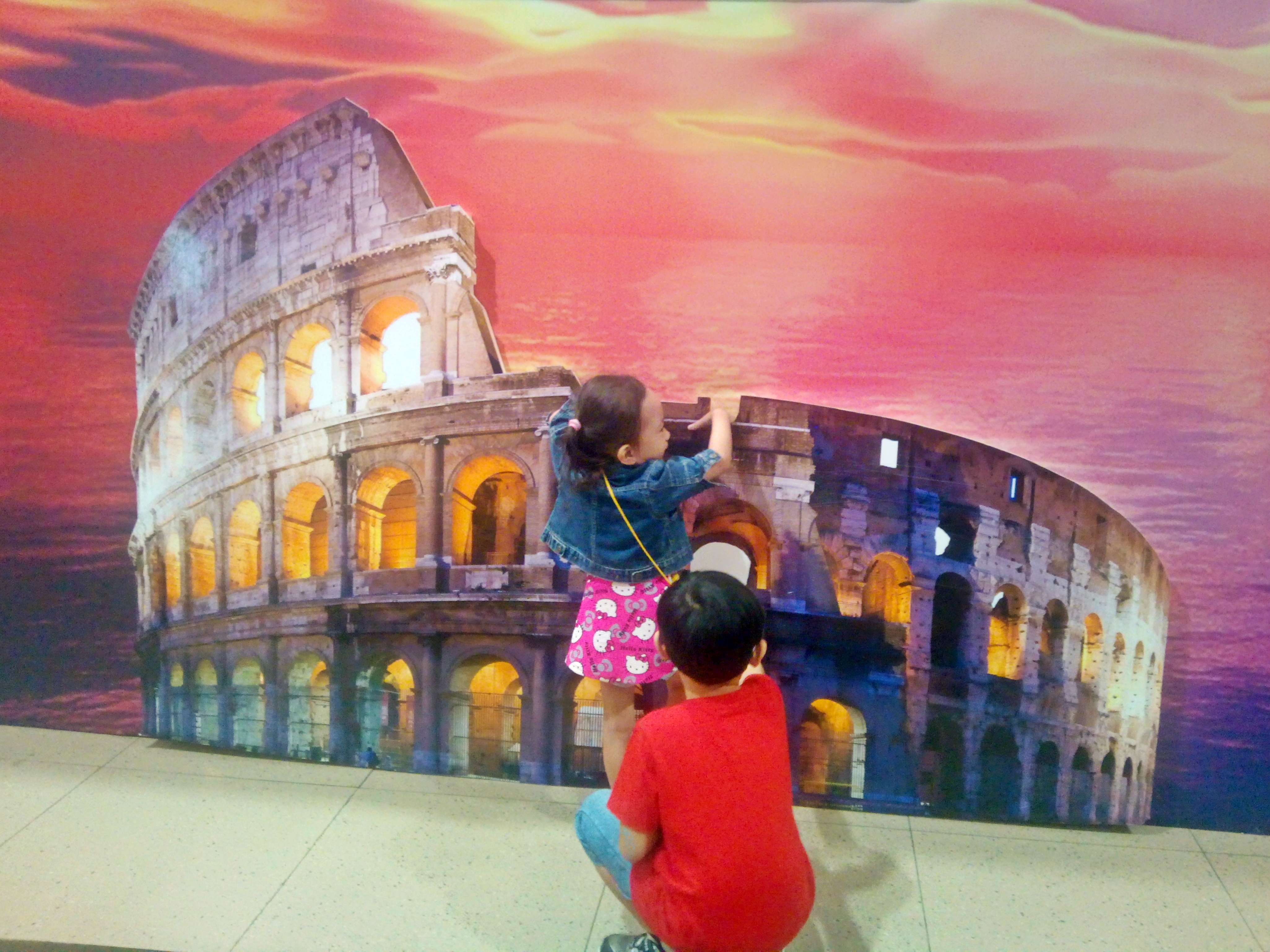
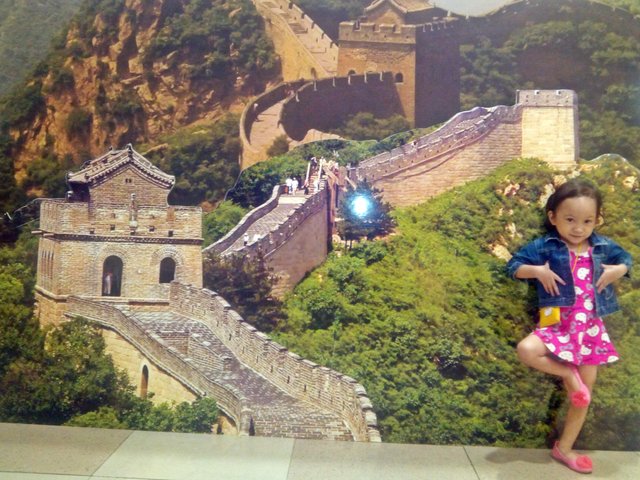
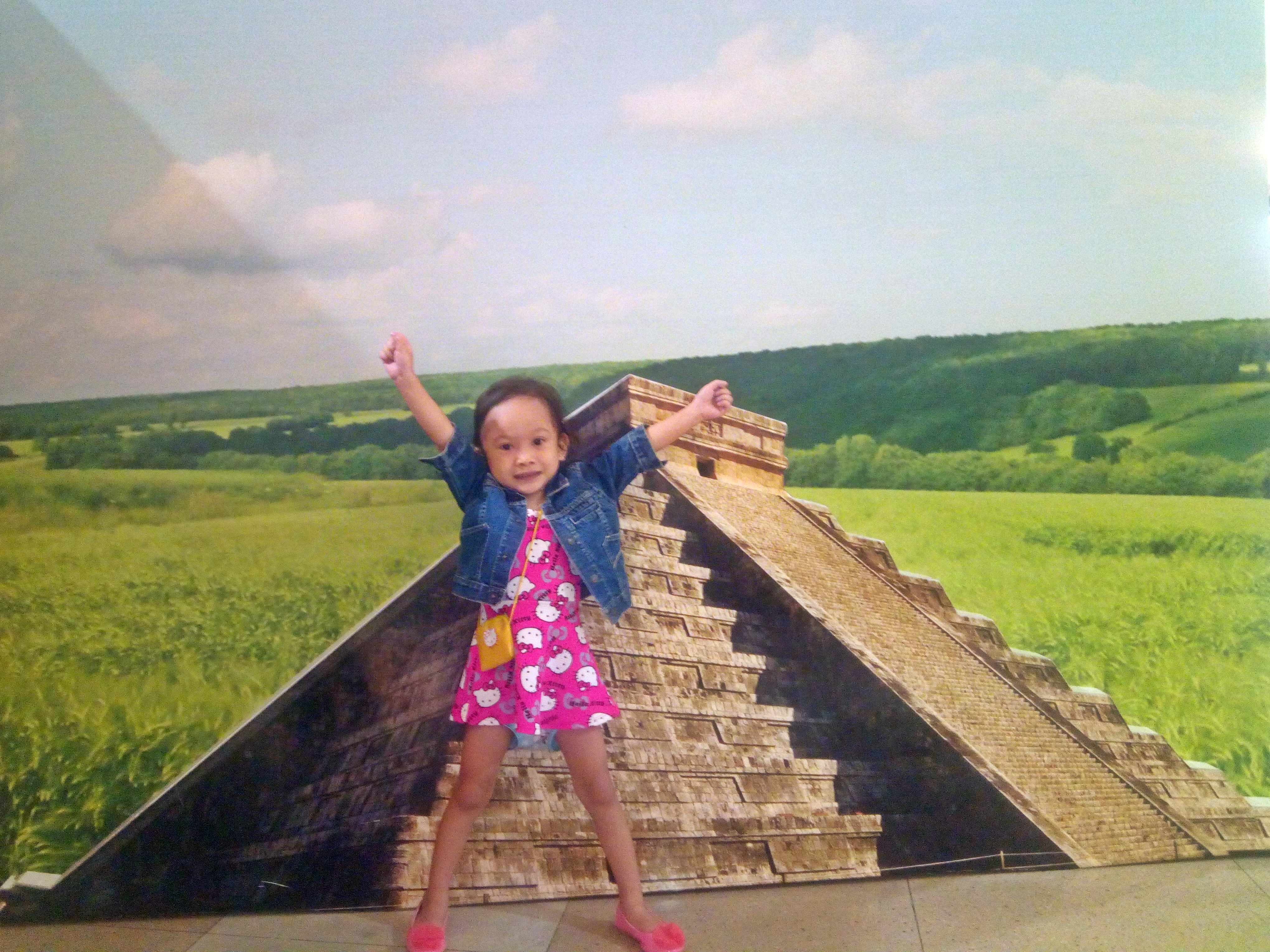

That was a very long trip. You traveled around the globe :)
Yes, that could have been a very long trip if we travelled for real. Thank you for dropping by! :)
You have a lovely daughter☺
Thank you @delpha! ♥
zoe so cute! bata pa xa dre cheli sah? hehe ka cute uy.mopose jd lage..
Last year pa ni cya J.an. Hehe. Bisag naay sakit, posing gihapon. ♥
I have been to Chichen Nitza. It is amazing! These photos stir up my adventuresome spirit. There are a couple there I would really love to visit!
Oh, really! You're lucky! If it's possible, we would love to visit them all. ☺